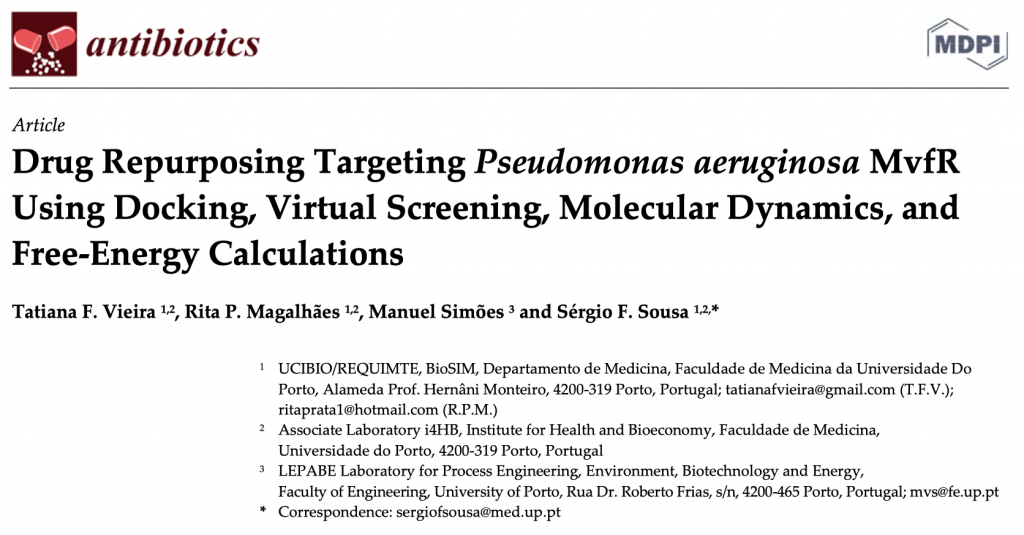Please check our recent publication in Antibiotics (IF 4.639), a collaboration with Professor Manuel Simões (LEPABE/FEUP) on drug repurposing targeting Pseudomonas aeruginosa.
Drug repurposing targeting Pseudomonas aeruginosa MvfR using Docking, Virtual Screening, Molecular Dynamics, and Free Energy Calculations
Vieira T. F., Magalhães R. P., Simões M., Sousa S.F.
Antibiotics
DOI: 10.3390/antibiotics11020185

Pseudomonas aeruginosa is an opportunistic gram-negative bacterium, responsible for acute and chronic infections in planktonic state or in biofilms. The sessile structures are known to confer physical stability, increased virulence and work as a protective armor against antimicrobial compounds. P. aeruginosa can control the expression of genes, population density and biofilm formation through a process called quorum-sensing (QS), a rather complex and hierarchical system of communication. A recent strategy to try to overcome bacterial resistance is to target QS proteins. In this study, a combined multi-level computational approach was applied to find possible inhibitors against P. aeruginosa QS regulator protein MvfR, also known as PqsR, using a database of approved FDA drugs, as a repurposing strategy. Fifteen compounds were identified as highly promising putative MvfR inhibitors. On those 15 MvfR-ligand complexes, molecular dynamics simulations and MM/GBSA free energy calculation were performed to confirm the docking predictions and elucidate on the mode of interaction. Ultimately, the five compounds that presented better binding free energies of association than the reference molecules (a known antagonist, M64 and a natural inducer, 2-nonyl-4-hydroxyquinoline) were highlighted as very promising MvfR inhibitors.
